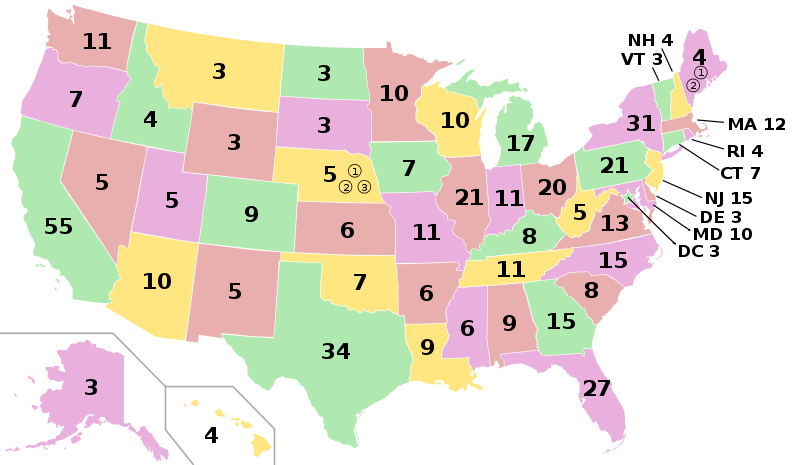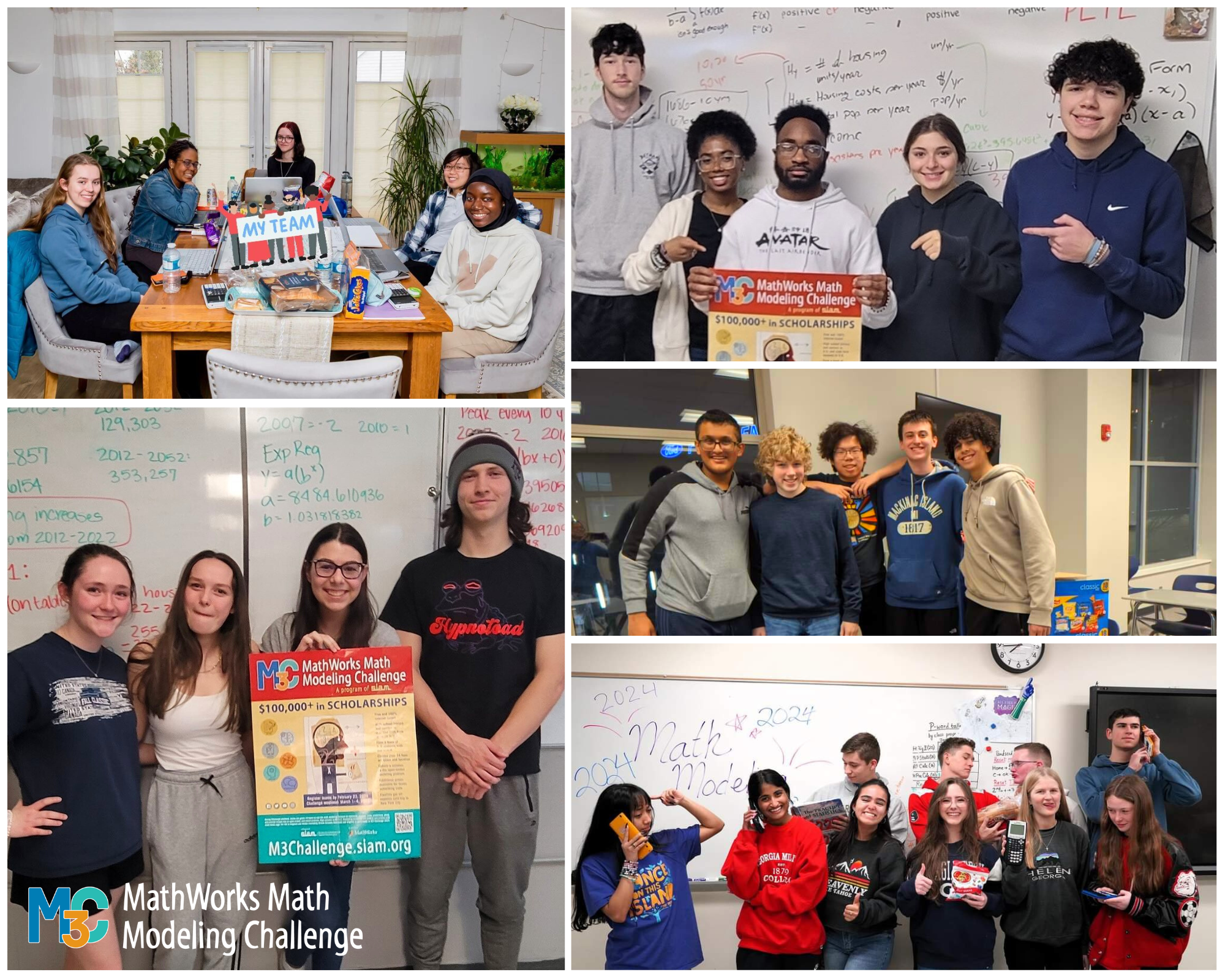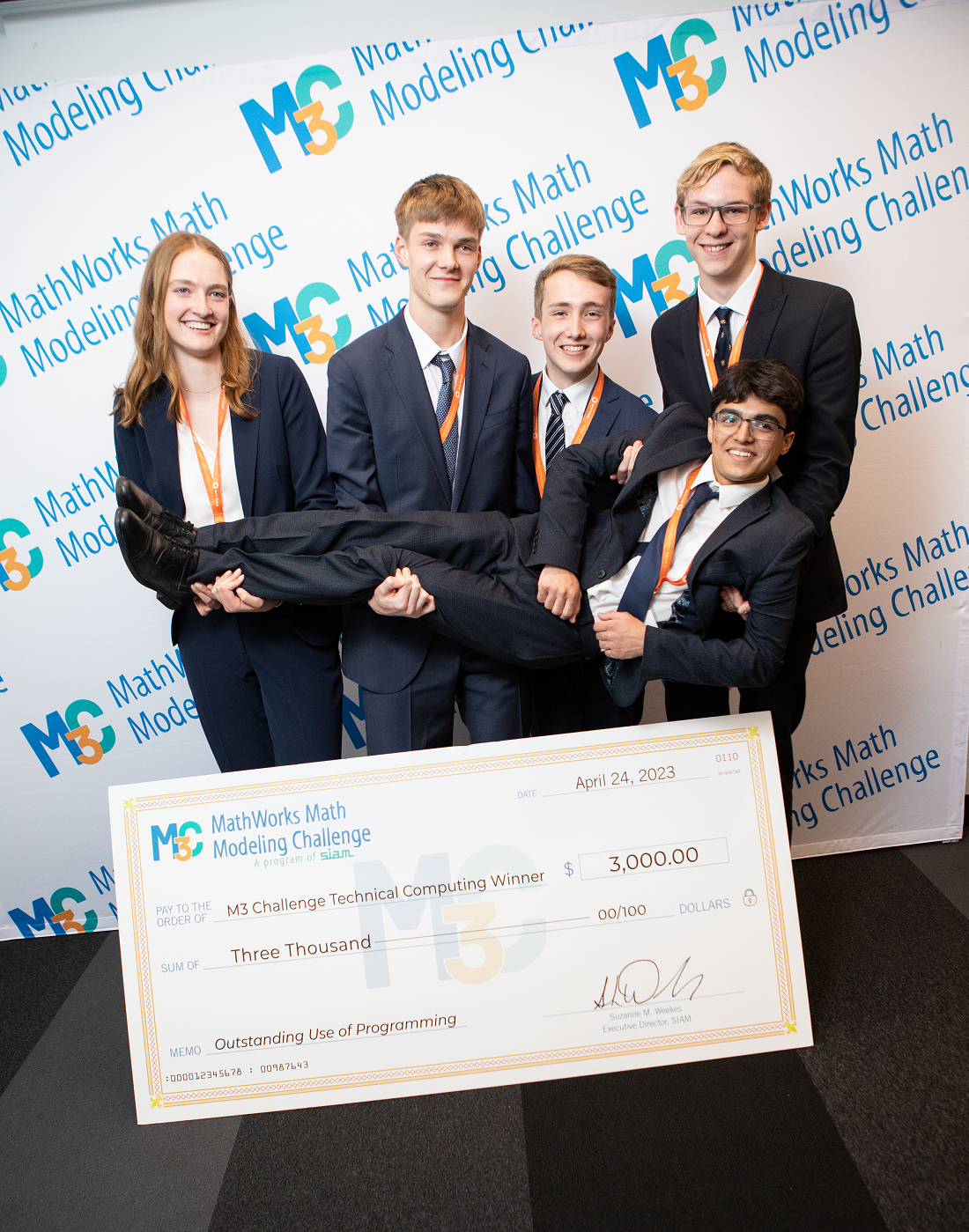Check out the live text-chat for this problem that happened on Monday, February 25, 2019 from 3:00 – 4:30 p.m. ET with the problem author in the “Comments” section below!

Every four years the Electoral College (EC) elects the U.S. President. In all but two states (Nebraska and Maine) the vote cast by each Elector is expected to be consistent with the winner of the plurality vote of the state they represent.
Because of the EC, presidential candidates typically focus their campaign resources on states where the vote is predicted to be close (commonly referred to as a “battleground” state). A commentary published soon after the 2016 election noted the following[1]:
“…53 percent of campaign events for Trump, Hillary Clinton, Mike Pence and Tim Kaine in the two months before the November election were in only four states: Florida, Pennsylvania, North Carolina and Ohio. During that time, 87 percent of campaign visits by the four candidates were in 12 battleground states, and none of the four candidates ever went to 27 states…”
Another result of this state-by-state “winner-takes-all” approach to allocating EC votes is that a candidate can win the presidency without winning the national popular vote, causing Americans to question the value of the EC system. In fact, since the ratification of the Constitution, there have been at least 700 proposed amendments to modify or abolish the EC – more than any other subject of Constitutional reform.
Consider the following proposals for changing the EC:
- The Proportional Plan divides each state’s electoral vote to mirror its popular vote.
- The District Plan awards two electoral votes to the state’s popular vote leader and the others to the winner in each congressional district.
- The Bonus Plan retains the current Electoral College system, but also awards an extra 102 electoral votes (two for every state and two for Washington D.C.) to the winner of the popular vote.
For each, develop a mathematical model that will provide a campaign with a plan for how to allocate campaign resources in the event that EC rules change.
The following links may help you get started:
- 538.com’s article The Last 10 Weeks Of 2016 Campaign Stops In One Handy Gif
- Use this web-based app to find the number of visits presidential candidates made to different U.S. cities while on the campaign trail.
The problem originates from use in the 24-hour Math Modeling Challenge (24MMC) 2017, a modeling competition for undergraduates. For more information about the 24MMC, contact Ben Galluzzo.
[1] http://www.newsweek.com/arguments-favor-electoral-college-wrong-522439
Problem Authors: Dr. Karen Bliss, Virginia Military Institute, and Dr. Ben Galluzzo, Clarkson University
Reference and other links included on this page were current and valid at time of original posting; if they are no longer valid or live please look for similar or updated links in context with the referenced topic.





